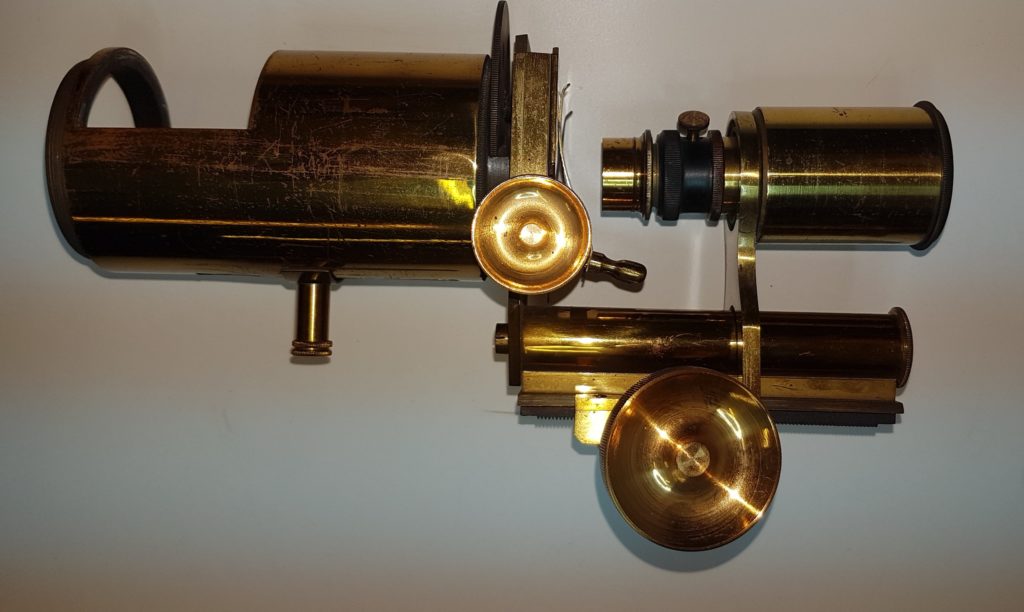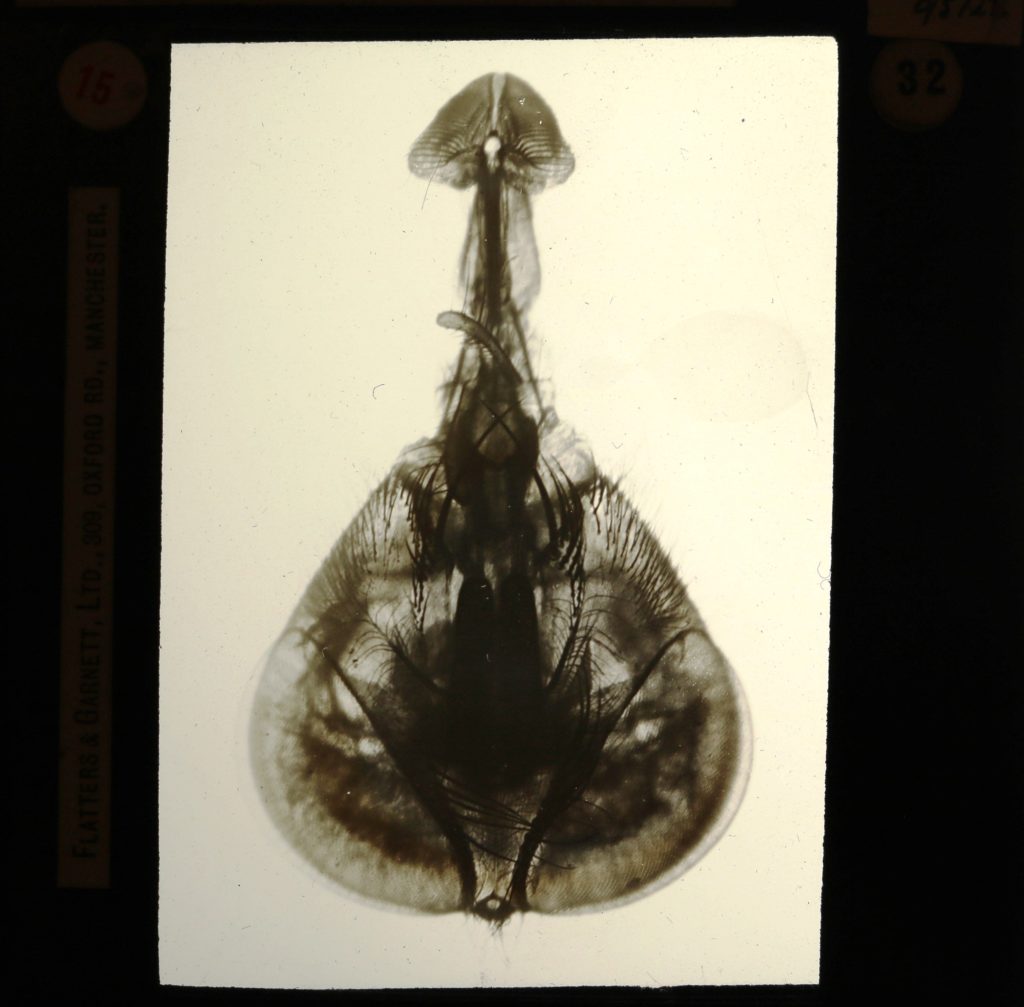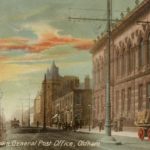
To celebrate microscopy’s amazing impact in our world, April 13th is World Microscope Day. In this post, Gallery Oldham volunteer Jasmine introduces us to the history of miscroscopy.
It is 400 years since Giovanni Faber first coined the word “microscope” in 1625, to describe a scientific instrument made by Galileo in 1609, now known as a compound microscope.

The word ‘microscope’ originates from the Greek words “mikros” meaning small, and “skopein” meaning observe. It developed from earlier work with magnifiers and optics, we owe much to the scientists of the past.
Antoine van Leeuwenhoek (1632-1723)
A Dutch microbiologist commonly known as “The Father of Microbiology”. He was a pioneer and created single lens microscopes. His many contributions included the recognition of red blood cells, the vacuoles in cells, bacteria and spermatozoa.
Robert Hooke (1635-1703)
An Englishman whose achievements included the invention of a compound microscope, the role of cells, (the term cell was coined whilst he studied cork under the microscope, as the compartments reminded him of monastic cells), and the publication of the book “Micrographia”, which included sketches of subjects seen under the microscope.
Rudolph Virchow (1821-1902)
A German who studied cells and cell theory, and worked on cancers, describing and naming diseases such as leukemia and thrombosis.
Louis Pasteur (1822-1895)
A Frenchman who studied microorganisms and invented the process of sterilizing liquids. The term pasteurisation, (as in pasteurised milk), is named after him. He also studied the anthrax bacterium and the rabies virus, developing a rabies vaccination.
Robert Koch (1843-1910)
A German bacteriologist who identified the bacterium responsible for T.B. (tuberculosis) and was awarded the Nobel Prize for Physiology of Medicine in 1905.
Alexander Fleming (1881-1955)
and his team discovered penicillin in 1928.They made this breakthrough with the observation of a mold growing in a Petri dish. (The Petri dish was designed by Julius Richard Petri for the growing of cultures. Petri was a student of Robert Koch).
The uses of the microscope are varied and essential.
- Medical tests for blood, urine, cancer, tissue and tumours.
- surgery
- Forensic tests.
- Study of bacteria and viruses,
- Study of archeological materials and samples.
- Identification of rocks and minerals
- Jewellery and watch making.
- Observation of tiny animals and organisms such as fungi. molds and algae.

Try to imagine a world today without these essential tests, observations, examinations and results.
Oldham Microscopical and Natural History Society launched in 1864 and still meets twice a month. Since it began the Society built up natural history collections and historical microscopes, which have been gradually added to Oldham Museum, now Gallery Oldham.
The Oldham Microscopical and Natural History Society are holding an event on Saturday 12th April 2025 in the foyer at the Gallery and Library in Oldham. We invite you to join us in celebrating the power, wonder and impact of the microscope on our world.



